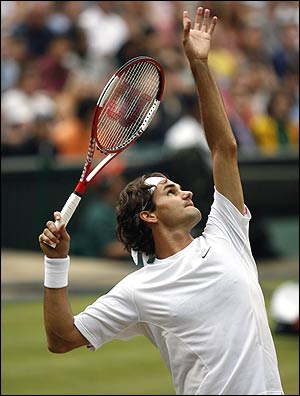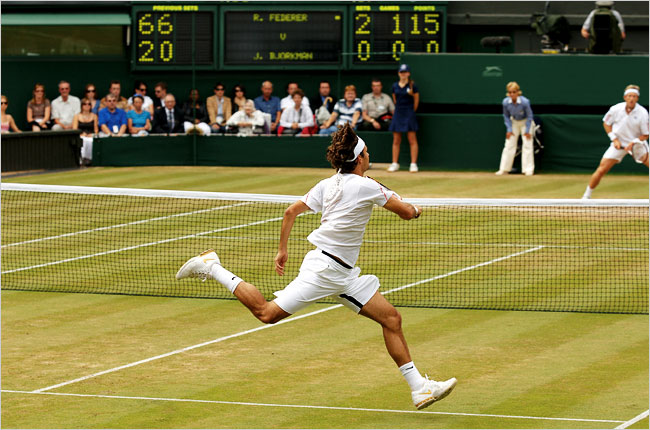
The novelist David Foster Wallace has a brilliant piece on Roger Federer in the "Play" magazine insert in tomorrow's New York Times (which arrives on Saturday for home subscribers like me). In the article contains a spot-on analysis of the limits of appreciating the sport on television:
TV tennis has its advantages, but these advantages have disadvantages, and chief among them is a certain illusion of intimacy. Television’s slow-mo replays, its close-ups and graphics, all so privilege viewers that we’re not even aware of how much is lost in broadcast. And a large part of what’s lost is the sheer physicality of top tennis, a sense of the speeds at which the ball is moving and the players are reacting. This loss is simple to explain. TV’s priority, during a point, is coverage of the whole court, a comprehensive view, so that viewers can see both players and the overall geometry of the exchange. Television therefore chooses a specular vantage that is overhead and behind one baseline. You, the viewer, are above and looking down from behind the court. This perspective, as any art student will tell you, “foreshortens” the court. Real tennis, after all, is three-dimensional, but a TV screen’s image is only 2-D. The dimension that’s lost (or rather distorted) on the screen is the real court’s length, the 78 feet between baselines; and the speed with which the ball traverses this length is a shot’s pace, which on TV is obscured, and in person is fearsome to behold. That may sound abstract or overblown, in which case by all means go in person to some professional tournament — especially to the outer courts in early rounds, where you can sit 20 feet from the sideline — and sample the difference for yourself. If you’ve watched tennis only on television, you simply have no idea how hard these pros are hitting the ball, how fast the ball is moving, how little time the players have to get to it, and how quickly they’re able to move and rotate and strike and recover.
The entire article can be read here (registration required).

